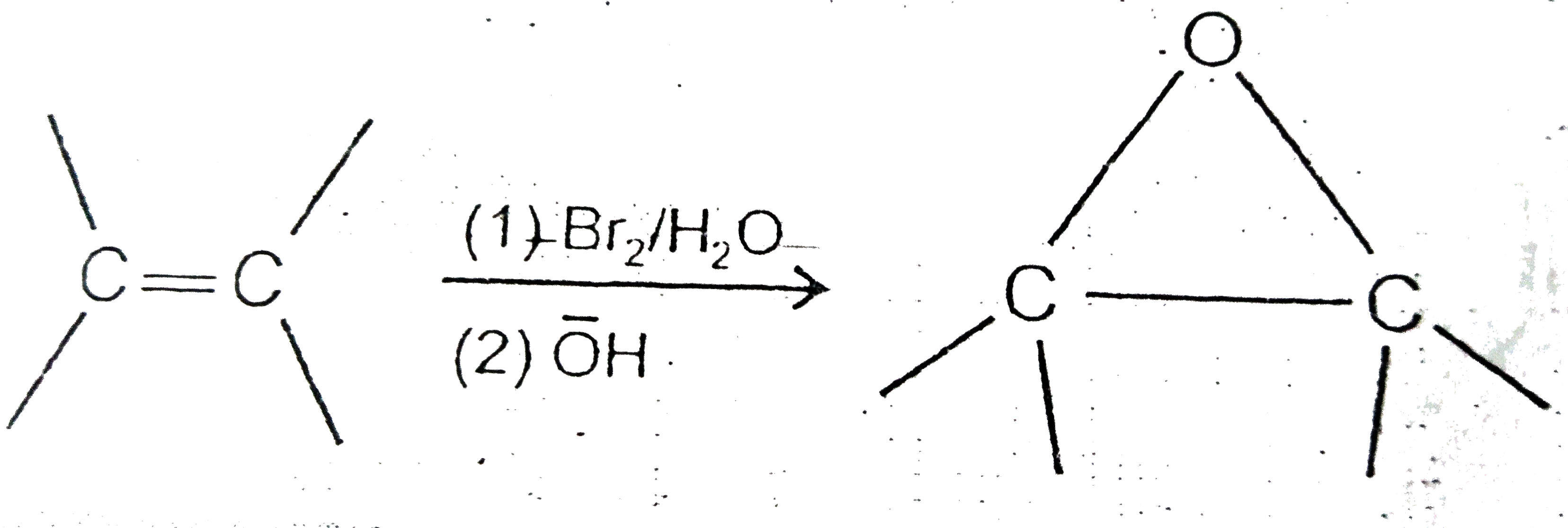Which of the following reaction will not occur spontaneously ?
F2+2Cl−→2F−+Cl2
I2+2Br−→2I−+Br2
Br2+2I−→2Br+I2
2I−+Cl−2→2Cl−+I2
The correct Answer is:B
To determine which of the following reactions will not occur spontaneously, we need to analyze the halogen reactions based on their reduction potentials. The halogens include fluorine (F2), chlorine (Cl2), bromine (Br2), and iodine (I2).
1. Understanding Reduction Potentials:
- The standard reduction potentials of halogens decrease down the group. This means that fluorine (F2) has the highest reduction potential, followed by chlorine (Cl2), bromine (Br2), and iodine (I2).
2. Identifying Strong Oxidizing Agents:
- Since fluorine has the highest reduction potential, it is the strongest oxidizing agent. This means it can readily accept electrons and reduce itself, while other halogens can be oxidized.
3. Analyzing Reactions:
- F2 + Cl⁻ → Cl2 + F⁻: This reaction is spontaneous because F2 can oxidize Cl⁻ to Cl2 while being reduced to F⁻.
- Cl2 + Br⁻ → Br2 + Cl⁻: This reaction is also spontaneous because Cl2 can oxidize Br⁻ to Br2 while being reduced to Cl⁻.
- Br2 + I⁻ → I2 + Br⁻: This reaction is spontaneous as well because Br2 can oxidize I⁻ to I2 while being reduced to Br⁻.
- I2 + Br⁻ → Br2 + I⁻: This reaction will not occur spontaneously because I2 has a lower reduction potential than Br2, meaning it cannot oxidize Br⁻ to Br2.
4. Conclusion:
- Among the reactions analyzed, the reaction I2 + Br⁻ → Br2 + I⁻ will not occur spontaneously due to the lower oxidizing power of iodine compared to bromine.
Final Answer:
The reaction that will not occur spontaneously is I2 + Br⁻ → Br2 + I⁻.
- The standard reduction potentials of halogens decrease down the group. This means that fluorine (F2) has the highest reduction potential, followed by chlorine (Cl2), bromine (Br2), and iodine (I2).
- Since fluorine has the highest reduction potential, it is the strongest oxidizing agent. This means it can readily accept electrons and reduce itself, while other halogens can be oxidized.
- F2 + Cl⁻ → Cl2 + F⁻: This reaction is spontaneous because F2 can oxidize Cl⁻ to Cl2 while being reduced to F⁻.
- Cl2 + Br⁻ → Br2 + Cl⁻: This reaction is also spontaneous because Cl2 can oxidize Br⁻ to Br2 while being reduced to Cl⁻.
- Br2 + I⁻ → I2 + Br⁻: This reaction is spontaneous as well because Br2 can oxidize I⁻ to I2 while being reduced to Br⁻.
- I2 + Br⁻ → Br2 + I⁻: This reaction will not occur spontaneously because I2 has a lower reduction potential than Br2, meaning it cannot oxidize Br⁻ to Br2.
- Among the reactions analyzed, the reaction I2 + Br⁻ → Br2 + I⁻ will not occur spontaneously due to the lower oxidizing power of iodine compared to bromine.
The reaction that will not occur spontaneously is I2 + Br⁻ → Br2 + I⁻.
Similar Questions
Knowledge Check
Which of the following reactions will not occur ?
A B
B C
C D
D
Which of the following reaction does not occur spontaneously?
AFe+3+Cd→Cd+2+Fe+2BFe+3+I−→Fe+2+I2CFe+2+MnO−4H+−−→Fe+3+Mn+2DFe+3+Ce+3→Fe+2+Ce+4Which of the following reactions will occur?
A2Ag+Cu(NO3)2→2AgNO3+CuBCu+ZnSO4→CuSO4+ZnC2Ag+H2SO4→Ag2SO4+H2D2Al+3FeSO4→Al2(SO4)3+3Fe
Which of the following reaction does not occur ?
View SolutionWhich of the following reactions cannot occur ?
View SolutionWhich of the following reaction does not occur?
View SolutionWhich of the following reactions does not occur ?
View SolutionWhich of the following reaction is not occur in aniline
View Solution
